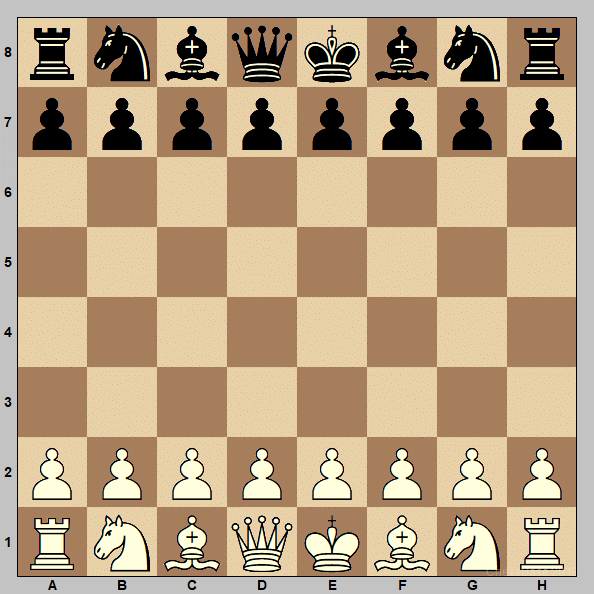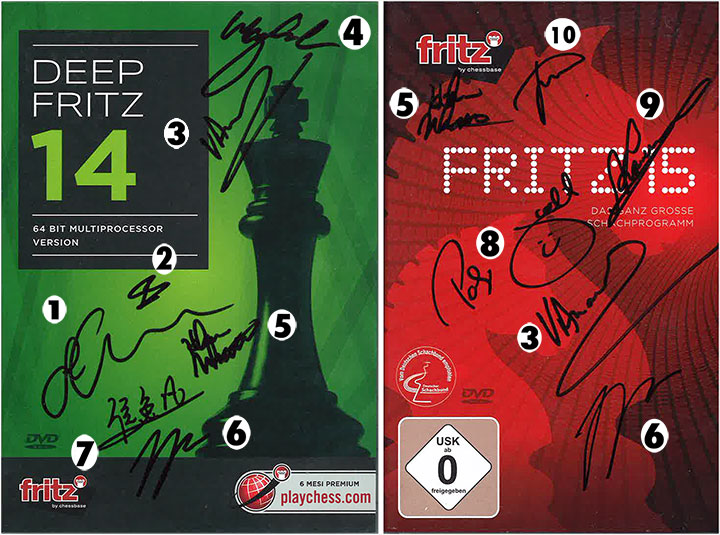Not an April 1st prank
For the first day of April — a day when we no longer try to fool our readers with a fake news prank — we gave you the following entertaining problem submitted by Pal Benko:
Construct a game that contains an en passant capture and castling, and ends with White mating on move six with a knight (1) on g5 and (2) on e5.
Note that you can move pieces on the above board to try to solve Benko's problem, right here in the browser.
Naturally both sides are cooperating to make the mate possible. Computer assistance was thankfully not available to help with the solution.
Our original publication had contained an error: we did not specify that it had to be White to mate, and specifically on the squares g5 and e5. But that turned out to be a blessing in disguise, as we received this email of Mihály Berkics from Hungary who wrote:
Actually, thanks for screwing [up], because this way you gave me multiple chess problem to solve, in an increasing order of difficulty! This corrected version was really hard. Probably I wouldn't have even started to solve it if I hadn't solved the previous, easier version. But now I just didn't want to give up! It took me about 20 very difficult minutes, but I think I have a solution.
For a white knight to deliver checkmate from g5 or e5 in such a short game, the black king must be on f7. White mates on move 6, so White has 6 moves, Black has 5 moves.
To castle short, you need four moves from the starting position:
- move a pawn to open the way for the bishop,
- move the bishop,
- move the knight,
- castle.
To castle long, you need one more (to move the queen).
For the black king to castle, and then move to f7 and get mated with no escape route, more than five black moves would be needed. Therefore, it must be White who castles, and 0-0, of course, as 0-0-0 plus ♘g1-f3-g5(e5) would require too many moves. Thus, White must move a pawn, then his king's bishop, his king's knight, then castle, and also play ♘g5# or ♘e5#: that is five moves, leaving White with only one 'spare' move.
Making an en passant capture from the opening position requires three moves:
- move a pawn twice (e.g. e2-e4 and e4-e5)
- make the capture.
Therefore, White cannot be the one making the en passant capture. Even if e2-e4 is part of his four moves to castle, two more moves would be required to make the en passant capture, and he has only one 'spare' move.
So, it is Black who will capture en passant, but from the starting position he needs three moves to do that. He must move his f-pawn anyway, so it's going to be f7-f5, then one more push with the pawn, then the en passant capture. This leaves him two more moves: one to get his king to f7, and one for ♛d8-e8 to block the king's retreat route.
Then the eighth row is blocked by black pieces, the seventh row is blocked by black pawns, the king is in check by a white knight from g5 or e5, which also covers e6 or g6, respectively. The other light square on the sixth row can be covered by the white bishop from d3 or h3. Just make sure there is no white pawn on e4 or g4 blocking its way. That is the 'Mattbild' to be constructed — well, almost. The problem is f6. How do you take it away from the black king? There is simply no time to bring in a further white piece, e.g. the queen to h6, the queen's knight to d5, or the queen's bishop to the long diagonal.
That leaves us with only one white piece that can attack f6: the rook on f1, after castling. But then White should get rid of his f-pawn before, and then ♘g5 or ♘e5 will come as a discovered check. Getting rid of the f-pawn can be White's 'spare' move! But how? After f2-f4, the white pawn can be taken en passant by a black pawn on e4 or g4, so Black's f-pawn will arrive on the 4th row not with a 'push', but with a capture on e4 or g4! Removing a white pawn from e4 or g4 also frees a diagonal for the white bishop! That is the trick! The f-line is then easy to clear for the discovered check if we use White's knight move to f3 as a capture.
With the considerations above in mind, it is finally possible to construct the two move orders leading to 6.♘g5# or 6.♘e5# with two more events of one castling plus one en passant capture occurring along the way:


Press Ctrl-R or Ctrl-F5 to refresh / reload the page and replay the games. Ahh, you want to know? The diagrams were created using the ChessBase 15 function File → Publish game → Animated GIF. Just one click.
We promised a ChessBase DVD signed by a number of famous players to be will be awarded to a reader who was drawn by lot from all those sending in the correct solution. This prize goes to Andras Toth of Canberra, Australia (greetings down under!). But we also award a special prize to Mihály Berkics for his wonderfully lucid explanation. Please send us your postal addresses using the feedback form.
DVDs signed by World Champions and other elite GMs:
- Fabiano Caruana
- Wesley So
- Viswanathan Anand
- Magnus Carlsen
- Hikaru Nakamura
- Levon Aronian
- Hou Yifan
- Judit Polgar
- Anatoly Karpov
- Jan Timman

Links
.jpeg)

























